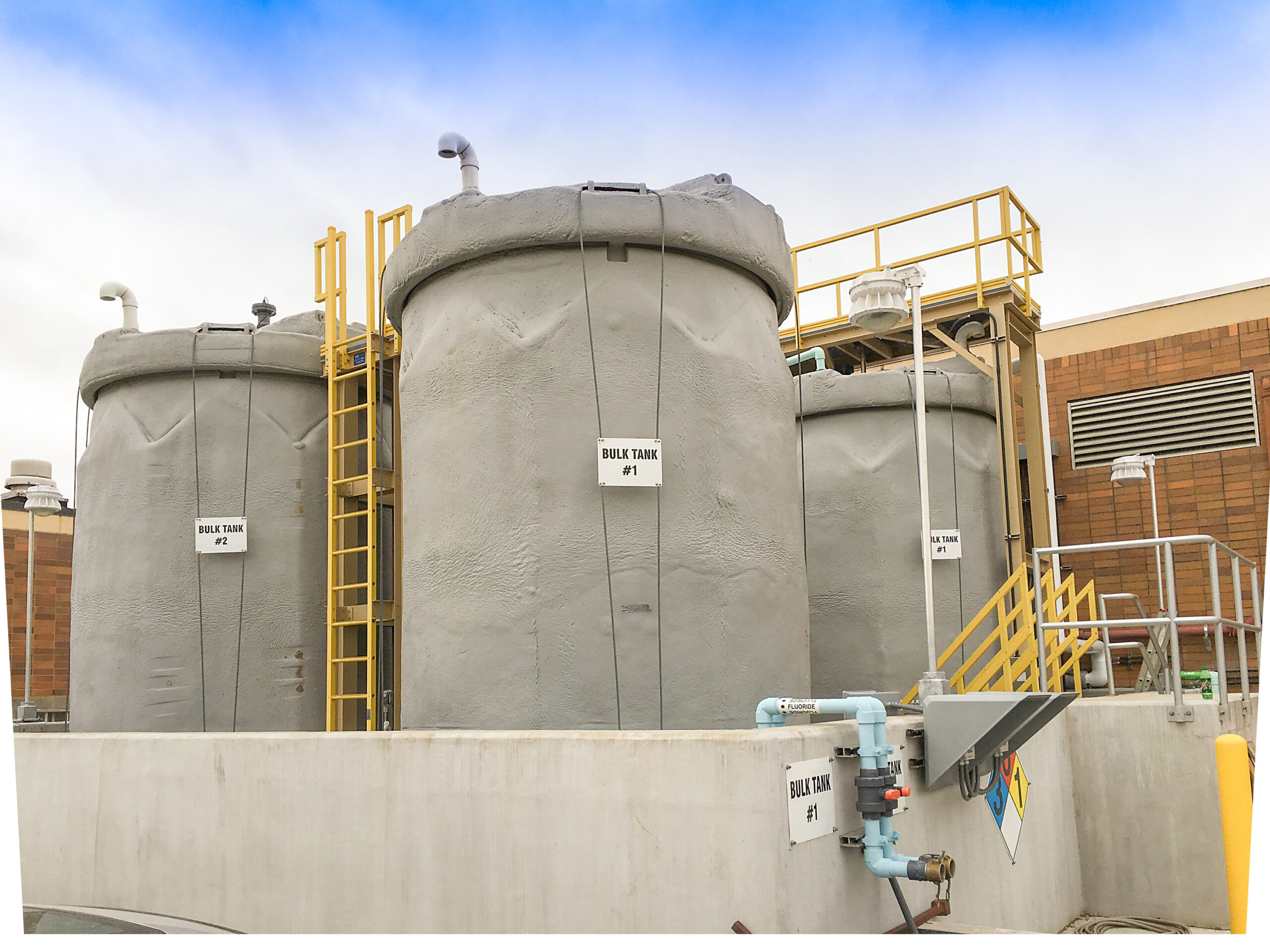
Outdated to Up to Date
Both water treatment plants’ chemical feed systems were nearing the end of their lifecycles, and due to their age, replacement parts were in short supply. The team established goals for the project that included continuity of operations under flood conditions, energy efficiency, reliability, maintainability, operational flexibility and consistency between the plants. To make the necessary repairs, we coordinated tandem upgrades at both facilities, installing new systems with standard components.
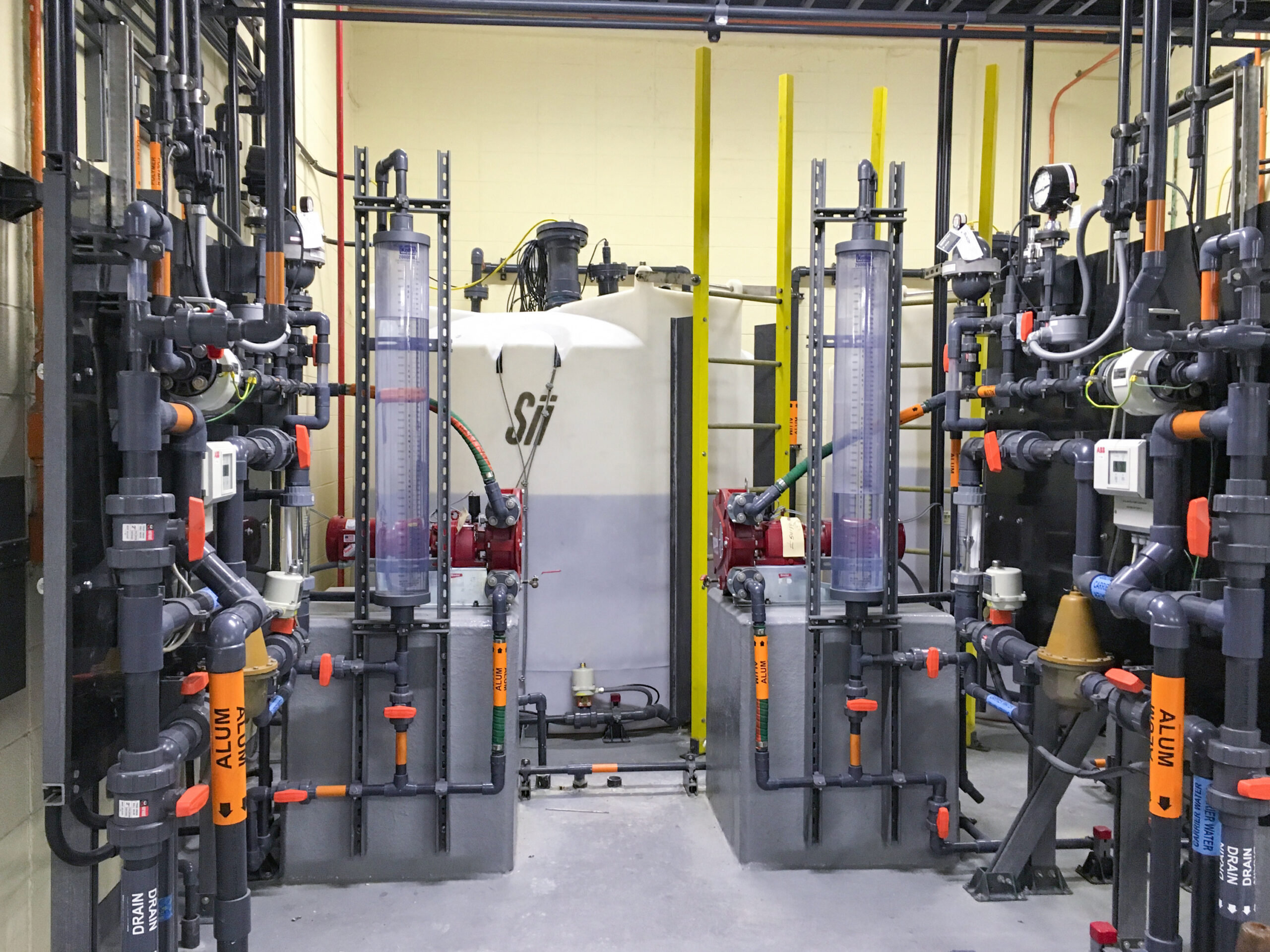
Streamlining Seven Chemical Flows
During the design phase, the most complex part of the project was making all seven chemical feed systems similar. Despite the chemicals’ different functions and properties, this upgrade standardized pumps and instruments across both plants for seven separate lines: alum, carbon, fluoride, lime, polyphosphate, polymer and permanganate.
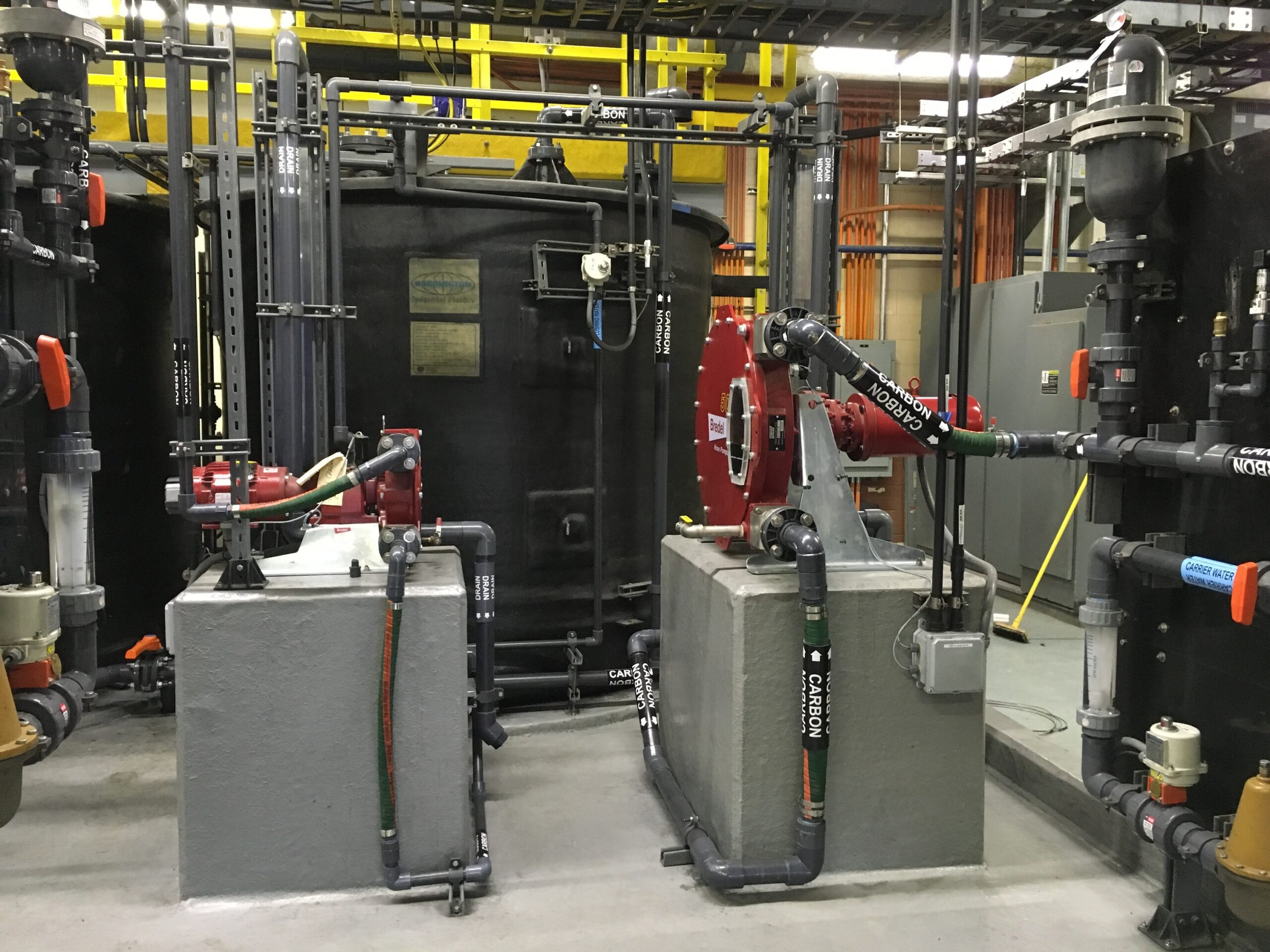
Consistency Makes Maintenance Easy
The installation of matching equipment at both water treatment plants eases friction for operations staff working between two locations. Reduced training needs and simplified upkeep were added benefits.
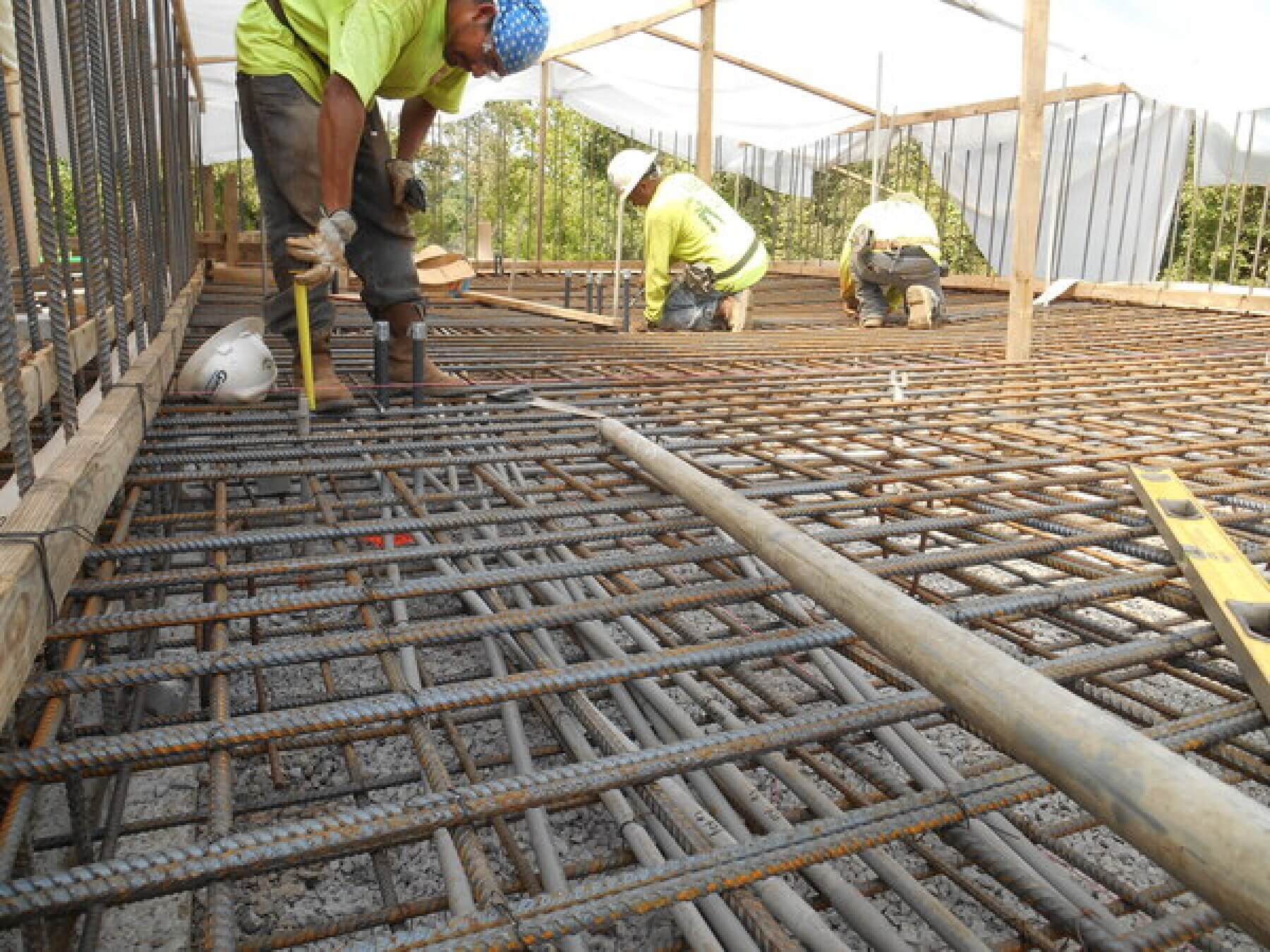
Keeping the Water on During Construction
During the flood K.R. Harrington was shutdown, leaving only Omohundro operational. Having experienced the negative impacts of the K.R. Harrington shut down, keeping the existing chemical feed systems operational while switching over to the new system was a key project goal. To maintain uninterrupted water flow, the project team had to create a detailed schedule for construction, startup and commissioning. This was only possible through solid relationships and constant communication with all stakeholders.
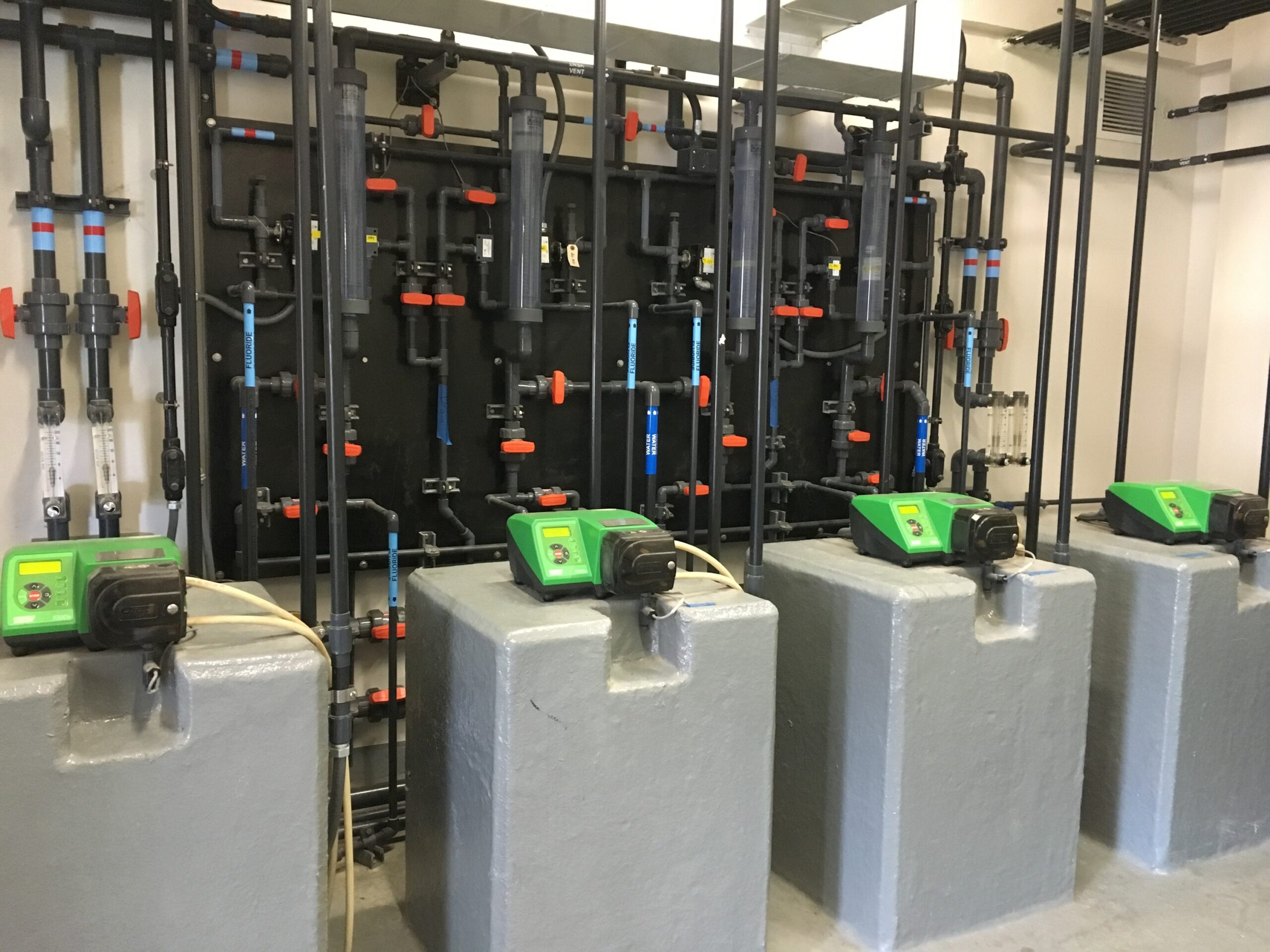
Running off Future Floods
To avoid a repeat hardship from forces of nature, both facilities were raised above the 500-year flood elevation plus 2 feet, as recommended by the Federal Emergency Management Agency (FEMA). The new state-of-the-art chemical feed systems at Nashville’s Omohundro and K.R. Harrington water treatment facilities not only enhance efficiency and chemical feed accuracy, but are flexible enough to meet both current and future water quality standards.